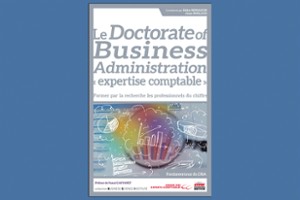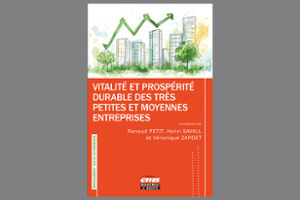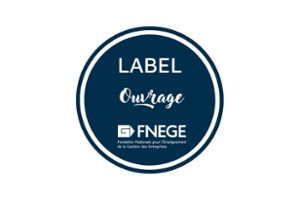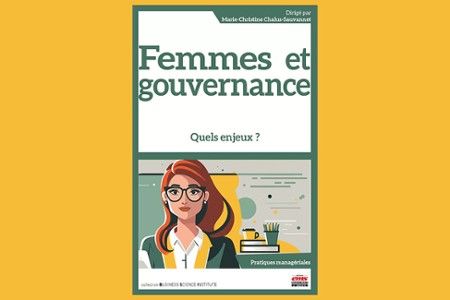Dans la même rubrique
Accueil :
- Accueil FR
- Publications
Publications
Publications
► Voir tout
- [hal-04447256] Recommandations de bonnes pratiques — Manager en structure de médecine d’urgences29 novembre 2024Management involves organizing, planning, coordinating, and/or scheduling a task. Emergency medical services (EMS) are subject to organizational challenges due to their specific activity, interprofessional relations within the team and with partners inside and outside the hospital. To help meet these challenges, the French Society of Emergency Medicine (SFMU) wanted to bring together experts practicing in EMS and teaching, and research experts to propose a set of guidelines for EMS management based on data from the literature. While managers must be recognized for their medical skills, they must also develop their leadership skills through specific training. These skills will enable them to adapt their leadership style to situations and teams in order to encourage team motivation and commitment. As the interface between teams in the field, management, and institutional partners, their role should be to encourage dialogue and reassure teams. The manager’s role and resources need to be formalized with management, in particular access to information so that the manager can convey a strategic vision to teams and partners. The implementation of a project and the holding of meetings must be organized with an effective strategy. To achieve this, setting out and sharing clear objectives, operating rules, and involving staff in decision making are effective tools for limiting resistance to change and encouraging the co-construction of transformations. The development of skills through individual and group training provides the time for exchanges necessary for professionals to flourish, for motivation to be strengthened, and for shared values to be built. Certain factors are directly associated with the attractiveness of an EMS, such as the working environment, diversification of activities, and individualized career management. The organizations that put in place must ensure psychological safety and effective interprofessional collaboration to improve the quality of working life and the quality of care. Communication and crisis management must be carefully thought out and methodically organized to build an EMS in which every employee can invest and feel at home. The experts agree that managing an EMS must be an organized activity with its own tools and skills. This role must be recognized by the teams, management, and partners.
- [hal-04118739] Use of Digital Technologies to Maintain Older Adults’ Social Ties During Visitation Restrictions in Long-Term Care Facilities: Scoping Review7 décembre 2023BackgroundDigital technologies were implemented to address the disruption of long-term care facility residents’ socialization needs during the COVID-19 pandemic. A literature review regarding this topic is needed to inform public policy, facility managers, family caregivers, and nurses and allied health professionals involved in mediating the use of digital devices for residents’ social ties.ObjectiveOur study outlines key concepts, methodologies, results, issues, and gaps in articles published during pandemic-related visitation restrictions.MethodsFollowing the PRISMA-ScR (Preferred Reporting Items for Systematic Reviews and Meta-Analyses Extension for Scoping Reviews) protocol, a scoping review was conducted by searching 3 database aggregator platforms (EBSCO, ProQuest, and PubMed) for studies published in peer-reviewed journals from early 2020 to the end of June 2021, when the most stringent restrictions were in place.We included qualitative and quantitative studies, reviews, commentaries, viewpoints, and letters to the editors in French or English focusing on digital technologies aiming to support the social contact of residents in long-term care facilities during pandemic-related visitation restrictions.ResultsAmong 763 screened articles, 29 met our selection criteria. For each study, we characterized the (1) authors, title, and date of the publication; (2) country of the first author; (3) research fields; (4) article type; and (5) type of technology mentioned.The analysis distinguished 3 main themes emerging from the literature: (1) impact and expectations of remote social contact on the physical and mental health and well-being of the residents (n=12), (2) with whom or what the social contact took place (n=17), and (3) limitations and barriers to significant social contact related to digital technologies (n=14).The results first underlined the highly positive impact expected by the authors of the digital technologies on health and quality of life of residents of long-term care facilities. Second, they highlighted the plurality of ties to consider, since social contact takes place not only with family caregivers to maintain contact but also for other purposes (end-of-life videoconferences) and with other types of contact (eg, with staff and robots). Third, they exposed the limitations and barriers to significant contact using digital technologies and outlined the required conditions to enable them.ConclusionsThe review demonstrated the opportunities and risks outlined by the literature about the implementation of digital technologies to support remote social contact. It showed the plurality of ties to consider and revealed the need to evaluate the positive impact of remote contact from the residents’ perspectives. Therefore, to go beyond the risk of digital solutionism, there is a need for studies considering the holistic impact on health regarding the implementation of digital technologies, including the meaning residents give to interpersonal exchanges and the organizational constraints.Trial RegistrationOSF Registries osf.io/yhpx3; https://osf.io/yhpx3
- [hal-04118678] Analyzing the use of videoconference by and for older adults in nursing homes: an interdisciplinary approach to learn from the pandemic3 décembre 2024Introduction: During the Covid-19 pandemic and the resulting visitation restrictions, digital tools were used in many nursing homes in France to allow the older adults and their relatives to maintain social contact via videoconferencing. This article adopts an interdisciplinary approach to analyze the processes that affect the use of digital technologies. Methods: Drawing on the concept of “mediation,” it seeks to shed light on how individuals embrace these tools in a relational situation. The interviews and observations undertaken among residents, their relatives, professionals, and the management head of seven nursing homes in 2021, make it possible to outline the different forms of practices and uses and to identify the factors leading to the variations observed. Results: While the key objective of these technical and technological tools is to compensate – on a functional level – for the communication problems and the isolation of individuals in order to promote residents’ “quality of life” by maintaining “social contact,” our study reveals that these tools’ uses and practices largely differ. It also shows considerable inequalities in terms of residents’ acquisition of subjective feelings of ownership of the tools. These are never attributed to isolated physical, cognitive, psychic, and social difficulties, but are influenced by specific organizational, interactional, and psychic configurations. Some of the structures analyzed revealed situations in which mediation failed, occasionally exposing the risk associated with seeking “ties at all costs,” or revealing a disturbing strangeness when residents were placed in front of screens. Some configurations, however, showed that it was possible to set up an intermediate space for the experience to unfold, which in turn opened up a space where individuals, groups, and institutions could experiment, allowing them to develop subjective feelings of ownership of this experience. Discussion: This article discusses how the configurations that failed to promote the mediation process reveal the need to assess the representations of care and assistance in the relationships between older adults, their loved ones, and nursing home professionals. Indeed, in certain situations, the use of videoconferencing, while seeking to produce a positive effect, risks displacing and increasing the effects of the “negative” associated with dependency, which may worsen individuals’ difficulties within nursing homes. The risks associated with the failure to take into account residents’ requests and consent explain why it is important to discuss how certain uses of digital tools may renew the dilemma between concerns for protection, on the one hand, and respect for autonomy on the other.
- [hal-01700407] L'entreprise du 21 ème siècle résiliente et ambidextre, le numérique comme hypothèse de travail (2016)4 février 2018Constitutifs de la vie même des organisations, les cycles et les chocs qui les accompagnent, peuvent dans certaines circonstances leur être fatal si elles ne font pas preuve de résilience pour les absorber. Les organisations se trouvent actuellement confronté à deux défis majeurs, une contraction économique depuis 2008, une transition technologique qui bouscule les modèles de gestion existants et chahute leur éco-système. Dès lors il s’agit bien d’un changement de paradigme majeur dans la gestion des organisations qui doivent tout en explorant de nouveaux terrains d’activité, préserver leurs ressources. L’organisation doit veiller à laisser s’exprimer l’agilité des éléments du système qui la composent et celle de ses collaborateurs pour leur permettre de répondre au défi de l’ambidextrie organisationnel face à l’incertitude et l’imprévisibilité qui caractérisent les environnements économiques contemporains. Pour lui permettre d’accéder à cette agilité, à développer la propriété de résilience et préserver ses capacités, l’information critique doit pouvoir être sécurisée et délivrée à temps via des systèmes d’information évolutifs sauf à être condamnée à ne pas pouvoir maintenir l’équilibre de son écosystème.
- [hal-01150258] Reflection-in-Action Markers for Reflection-on-Action in Computer-Supported Collaborative Learning Settings31 décembre 2015We describe an exploratory study on the use of markers set during a synchronous collaborative interaction (reflection-in-action) for later construction of reflection reports upon the collaboration that occurred (reflection-on-action). During two sessions, pairs of students used the Visu videoconferencing tool for synchronous interaction and marker setting (positive, negative or free) and then individual report building on the interaction (using markers or not). A quantitative descriptive analysis was conducted on the markers put in action, on their use to reflect on action and on the reflection categories of the sentences in these reports. Results show that the students (1) used the markers equally as a note-taking and reflection means during the interaction, (2) used mainly positive markers both to reflect in and on action; (3) paid more attention in identifying what worked in their interaction (conservative direction) rather than in planning on how to improve their group work (progressive direction); (4) used mainly their own markers to reflect on action, with an increase in the use of their partners' markers in the second reflection reports; (5) reflected mainly on their partner in the first reflection reports and more on themselves in the second reports to justify themselves and to express their satisfaction.
- [halshs-00728493] Une singularité dans l'aide à la décision : le cas de la Liaison 166 septembre 2012Cet article se penche sur un type particulier de Système d'Aide à la Décision (SAD), les systèmes d'aide à la décision centrés réseaux, et pose la question de ses effets sur la créativité des décideurs lorsqu'ils sont confrontés à des situations extrêmes. Une étude de cas exploratoire, s'intéressant aux potentialités créatives d'un SAD militaire centré réseaux, est développée. Il s'agit d'étudier les effets d'une liaison de données tactiques appelée Liaison 16 sur la créativité de ses usagers, en l'occurrence des pilotes de chasse sur Rafale. Le corpus des données de terrain a été construit par triangulation de 33 entretiens individuels, d'observations non participatives ainsi que d'archives et de rapports officiels. L'analyse des résultats suggère que ce système d'aide à la décision favorise la créativité, bien qu'il n'ait pas été conçu en ce sens. L'émergence de créativité résulte de la combinaison entre les caractéristiques de flexibilité du système tout en respectant des règles strictes, l'intégration de ce système dans un processus organisationnel et les capacités intrinsèques des utilisateurs.
- [hal-03207403] Intangible resources and cross-border acquisition decisions: The impact of reputation and the moderating effect of experiential knowledge9 mai 2023Drawing from the resource-based view, signaling theory, and internationalization literatures, we argue that a key intangible resource – reputation – influences the decision to engage in cross-border acquisitions (CBAs). Reputation facilitates foreign market entry by reducing the risks and costs inherent in such strategic moves, while acting to curb potentially risky decisions. Based on a longitudinal sample of 869 acquisitions conducted by European and US firms, our study confirms the inverted U-shaped relationship between a firm’s reputation and the likelihood of undertaking CBAs. We also find that international experiential knowledge moderates the relationship between reputation and the likelihood of additional CBAs. Our research contributes to the growing literature on the influence of intangible strategic resources, especially that of reputation, on foreign market entry strategies.
- [hal-01700405] Big 1 et Open Data, dispositifs contingents des développements sociaux & économiques locaux ?4 février 2018Dans cette recherche, apparait pour le bigdata la nécessité d’une gouvernance de l’information au niveau territorial (ville, intercommunalité), gouvernance qui s’appuie sur la construction d’un écosystème propice à l’innovation et l’invention que Pentland [27] qualifie d’écosystème de stimulation intellectuelle immergé dans un processus d’essai/erreur. L'organisation territoriale (OT) produit, détient, stocke, échange ou possède une grande quantité de données, données pouvant être insérées dans un système de gestion de données de masse (Big Data). Une vigilance doit être apportée à la qualité des données, celle-ci pouvant biaiser la prise de décisions [9]. Pour cette raison il convient de mettre en place également une organisation des données MDM (Master Data Management : en Français, gestion des données de référence ou gestion des données maîtres) basée sur un référentiel de données avec des règles métier (c'est-à-dire des activités, réalisées suivant des procédures administratives, corrélées ou en interactions qui contribuent aux finalités de la collectivité), et un processus rigoureux qui produit de la donnée de qualité à destination des citoyens et plus généralement des parties prenantes locales, processus nommé BPM (Business Process Management : en Français, Gestion des Processus Métiers). Il s’agit en fait d’une réappropriation des données par les métiers présents dans l’OT. L’utilisation de ces données peut-être protéiforme et générateur de business possiblement insoupçonné. C’est le cas d’entreprises qui se créent et se développent principalement à partir d’objets nouveaux, issus généralement d’une idée créative. Ou d’entreprises qui se transforment en même temps que les usages numériques. Dans cette hypothèse, on parle alors d’improvisation organisationnelle au service de la créativité et de l’innovation. Des nouvelles plateformes Web collaboratives (crowdfunding : financement participatif et crowdlending : prêt participatif) vont probablement mettre le citoyen au centre des échanges et ainsi le transformer d’un citoyen consommateur en citoyen consom’acteur. Cette évolution permettra aux citoyens par leur contribution à ces plateformes de participer aux politiques publiques. Le développement du « deep learning : apprentissage profond » et des « machines learning : apprentissage automatique ou apprentissage statistique» permettra de modéliser les données et d’en déduire des comportements ad-hoc au service par exemple de la santé et des déplacements de citoyens.
- [halshs-01337216] Drivers and barriers to pre-adoption of strategic scanning information systems in the context of sustainable supply chain24 juin 2016This research is reporting on the pre-adoption of Strategic Scanning (S.Scan) information systems (IS). More specifically, it relates to the pre-adoption phase, that is, the emergence of the idea of such a system and the evaluation of its need for the organization, upstream of any technological consideration. The research question is the following: what are the drivers and barriers that influence the pre-adoption of a S.Scan IS? The objective of this research is to extend knowledge on a subject that has received little attention from the scholars. Research's originality relies on the use of isomorphic processes from neo-institutional framework to study pre-adoption in the field of S.Scan. On the basis of a multi-method research combining qualitative and quantitative exploratory studies in the specific field of sustainable supply chains (SSC), our results highlight 31 drivers and barriers to pre-adoption of S.Scan IS, ten of which have not been identified before, and five types of pressures. They therefore suggest that pre-adoption of S.Scan IS can be subject to both functional and institutional pressures. It can be driven either by competitiveness or conformism pressures, and hindered by performance objectives or lack of coercive pressures. Finally, these results put a question mark about the understanding of the strategic dimension of S.Scan IS by organisations, and the government's role and its responsibility for promoting SSC initiatives and for the adoption of S.Scan IS on this issue.
- [hal-02316038] Le processus de décision naturaliste en environnement big data : le cas des forces de Police au sein d’un Centre d’Information et de Commandement (CIC)4 décembre 2024L’approche Naturalistic Decision Making (NDM) constitue un paradigme de recherche dominant lorsqu’il s’agit d’analyser le processus de décision d’experts évoluant en environnement dynamique, confrontés à des problèmes faiblement structurés et exigeant une résolution rapide. Depuis une dizaine d’années, le développement des technologies de l’information contribue à enrichir l’approche NDM. S’inscrivant dans cette perspective, une étude de cas qualitative inductive est développée pour comprendre comment des policiers experts d’un Centre d’Information et de Commandement (CIC) prennent des décisions en environnement big data. Le CIC produit quotidiennement un volume important de données véloces, variées et nécessitant d’être vérifiées, que les policiers assemblent en situation à partir de dispositifs technologiques non intégrés. L’analyse du cas met l’accent sur deux phases du processus de décision en environnement big data : une phase amont de conscience de la situation, pleine ou incomplète selon les situations, et une phase de reconnaissance immédiate. Ces résultats permettent de proposer un modèle intégré du processus de décision naturaliste, appliqué au cas des policiers du CIC en environnement Big data.
Archives ouvertes HAL
Portail des publications scientifiques de l'Université Jean Moulin Lyon 3.
Accéder au portail
Accéder au portail








